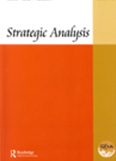Political Violence in Bangladesh: Trends and Causes
Since the events of March 1971, Bangladesh has seldom been free from violence. While much of the recent attention revolves around religious extremism and militancy, political violence, as this paper argues, is a larger problem for Bangladesh. At every level of society, Bangladesh has had to confront with acts of violence. Lack of governance impedes the polity from effectively controlling violence, organised and unorganised, against different sections of society.
- Sreeradha Datta
- July 2005





